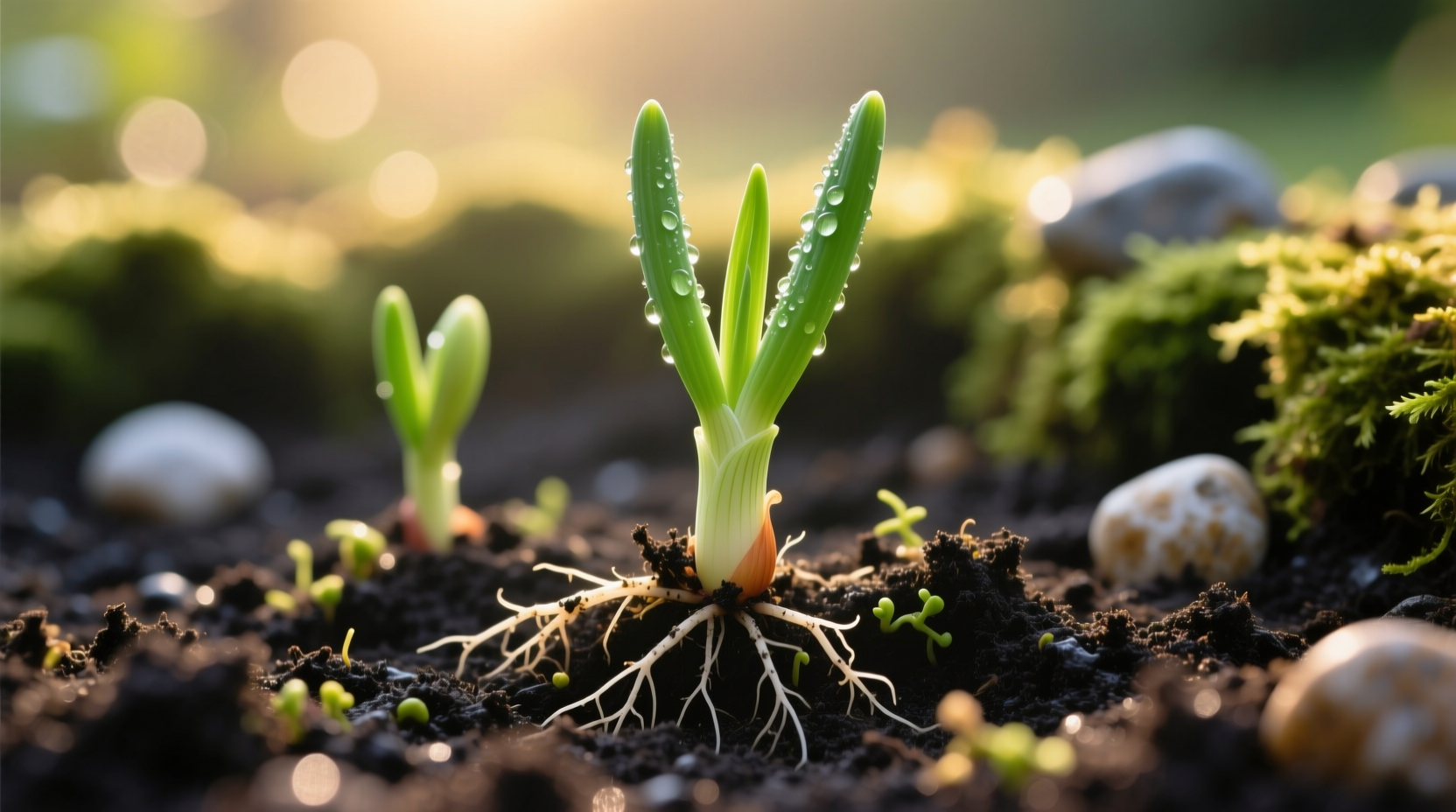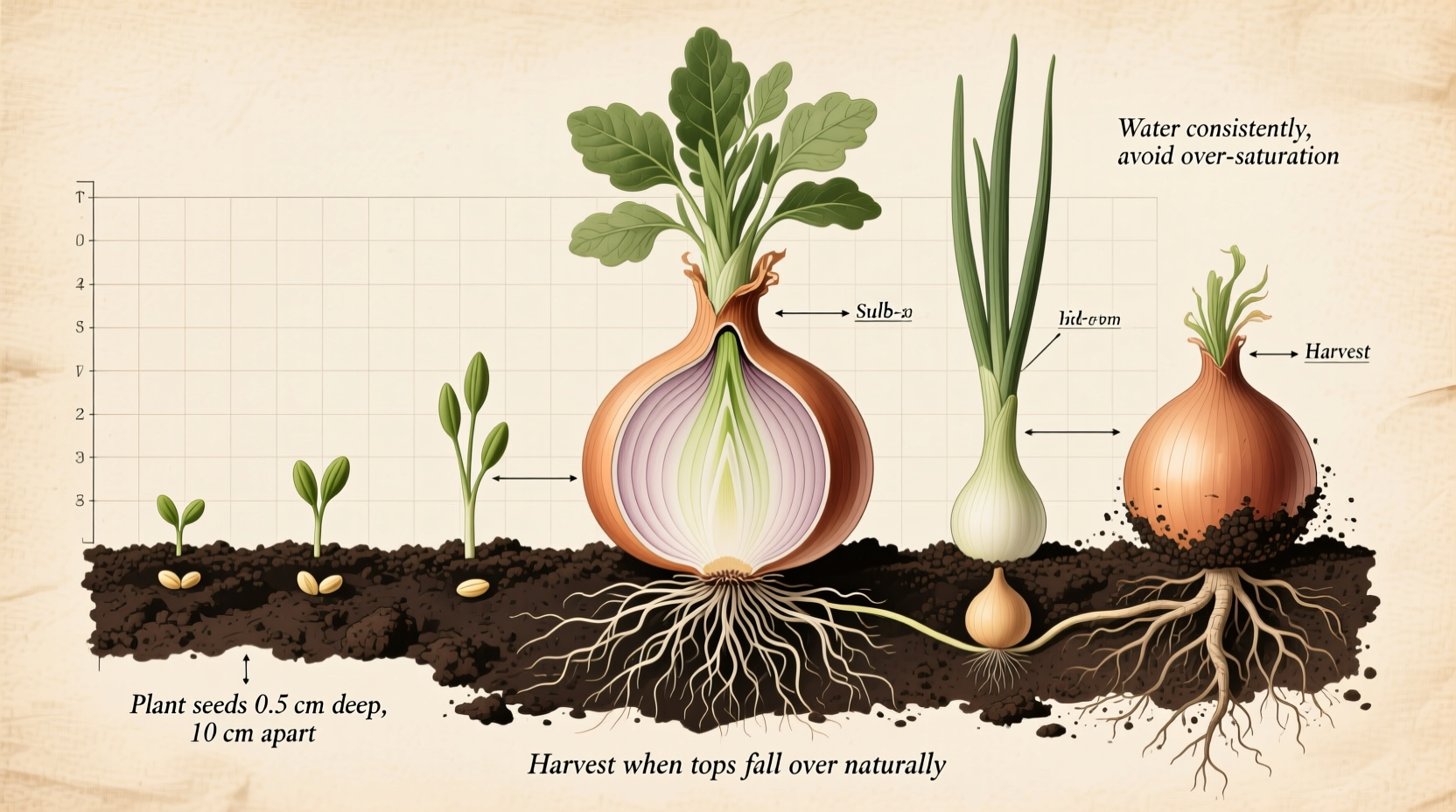Imagine harvesting your own crisp, flavorful onions just steps from your kitchen door. Homegrown onions taste fresher, cost less than store-bought varieties, and give you complete control over growing methods. Whether you're a first-time gardener or expanding your vegetable patch, this comprehensive guide delivers everything you need to cultivate thriving onion crops with minimal effort and maximum yield.
Planning Your Onion Garden: Varieties and Timing
Selecting the right onion type for your region determines your success. Onions fall into three main categories based on daylight requirements:
| Variety Type | Daylight Requirement | Best Regions | Maturation Time |
|---|---|---|---|
| Short-Day Onions | 10-12 hours | USDA Zones 7-11 (Southern states) | 90-110 days |
| Intermediate-Day Onions | 12-14 hours | USDA Zones 5-7 (Midwest, Mid-Atlantic) | 100-120 days |
| Long-Day Onions | 14-16 hours | USDA Zones 2-5 (Northern states) | 110-130 days |
According to the USDA Agricultural Research Service, matching your onion variety to your geographic location prevents premature bulb formation. Southern gardeners should plant short-day varieties like 'Texas Sweet' in fall for spring harvest, while northern growers need long-day types such as 'Walla Walla' planted in early spring.
Soil Preparation: Creating the Perfect Foundation
Onions demand well-prepared soil for optimal growth. Follow these steps two weeks before planting:
- Test soil pH using a home kit or local extension service - ideal range is 6.0-7.5
- Remove all rocks and debris that could deform developing bulbs
- Amend soil with 3-4 inches of compost or well-rotted manure
- Create raised beds 4-6 inches high for improved drainage
- Apply balanced organic fertilizer (10-10-10) according to package instructions
University agricultural extensions consistently report that proper soil preparation reduces common onion problems by up to 60%. The University of Minnesota Extension emphasizes that onions have shallow root systems requiring loose, nutrient-rich soil for maximum bulb development.
Planting Methods: Seeds, Sets, or Transplants?
Choose your planting method based on your experience level and desired harvest time:
Onion Sets (Best for Beginners)
Plant dormant bulbs 1 inch deep with pointed end up, spacing 4-6 inches apart in rows 12-18 inches apart. Sets produce harvestable onions in 60-80 days with minimal care. The main drawback: limited variety selection and higher risk of bolting.
Transplants (Recommended for Best Results)
Start seeds indoors 8-10 weeks before last frost date, then transplant hardened seedlings when they reach pencil thickness. Space plants 4-6 inches apart. This method yields larger, more uniform bulbs with greater variety options.
Direct Seeding (Most Economical)
Sow seeds ¼ inch deep after soil reaches 50°F, thinning to final spacing of 4-6 inches. Requires more attention but offers the widest variety selection. Expect 100-170 days to maturity depending on variety.

Essential Care Throughout the Growing Season
Consistent care ensures healthy onion development. Follow this timeline for optimal results:
Weeks 1-4: Establishment Phase
- Water daily to maintain consistent moisture (1 inch per week)
- Apply 2-inch mulch layer to suppress weeds and retain moisture
- Monitor for thrips and treat with insecticidal soap if needed
Weeks 5-10: Bulb Formation Stage
- Reduce watering to 1 inch every 5-7 days as bulbs begin forming
- Apply nitrogen-rich fertilizer when plants reach 6 inches tall
- Stop all fertilization when bulbs break soil surface
Weeks 11-16: Maturation Period
- Gradually reduce watering 2-3 weeks before expected harvest
- Watch for tops to naturally fall over - this signals maturity
- Avoid working soil around plants to prevent bulb damage
Gardeners across multiple climate zones report that consistent moisture management prevents the most common onion problems. The Oregon State University Extension notes that irregular watering causes double centers and increased disease susceptibility in 78% of failed onion crops.
Harvesting and Curing: The Critical Final Steps
Timing your harvest correctly determines storage longevity. Harvest when:
- At least 50% of tops have naturally fallen over
- Bulb necks feel soft and beginning to constrict
- Outer skins become dry and papery
To cure onions properly:
- Gently lift bulbs with garden fork, avoiding damage
- Leave onions in garden for 24 hours if weather permits
- Move to dry, shaded area with good air circulation
- Cure for 2-3 weeks until necks are completely dry
- Trim roots to ¼ inch and tops to 1 inch after curing
Properly cured onions store for 6-8 months in mesh bags at 32-40°F with 65-70% humidity. Never store onions near potatoes, which release moisture that shortens onion shelf life.
Troubleshooting Common Onion Growing Problems
Even experienced gardeners encounter challenges. Here's how to address frequent issues:
Premature Bolting (Flowering)
Cause: Temperature fluctuations or improper variety selection
Solution: Remove flower stalks immediately; use bolting onions first as they store poorly
Small Bulb Size
Cause: Overcrowding, poor soil nutrition, or incorrect day-length variety
Solution: Thin plants to proper spacing; test and amend soil; select appropriate varieties
Yellowing Leaves
Cause: Nitrogen deficiency or onion maggot infestation
Solution: Apply balanced fertilizer; rotate crops annually; use row covers for pest prevention
According to the Penn State Extension, crop rotation is the single most effective practice for preventing soil-borne diseases, reducing problems by up to 85% when implemented properly.
Maximizing Your Onion Harvest
With proper care, a single square foot of garden space yields 8-12 full-sized onions. For continuous harvest, plant successive crops every 2-3 weeks during appropriate planting windows. Remember that green onions can be harvested at any stage, while storage onions require complete maturation and curing.
By following these science-backed methods, you'll enjoy homegrown onions with superior flavor and freshness that outperforms store-bought options. The initial effort pays dividends throughout the year as you incorporate your homegrown bounty into favorite recipes.











 浙公网安备
33010002000092号
浙公网安备
33010002000092号 浙B2-20120091-4
浙B2-20120091-4